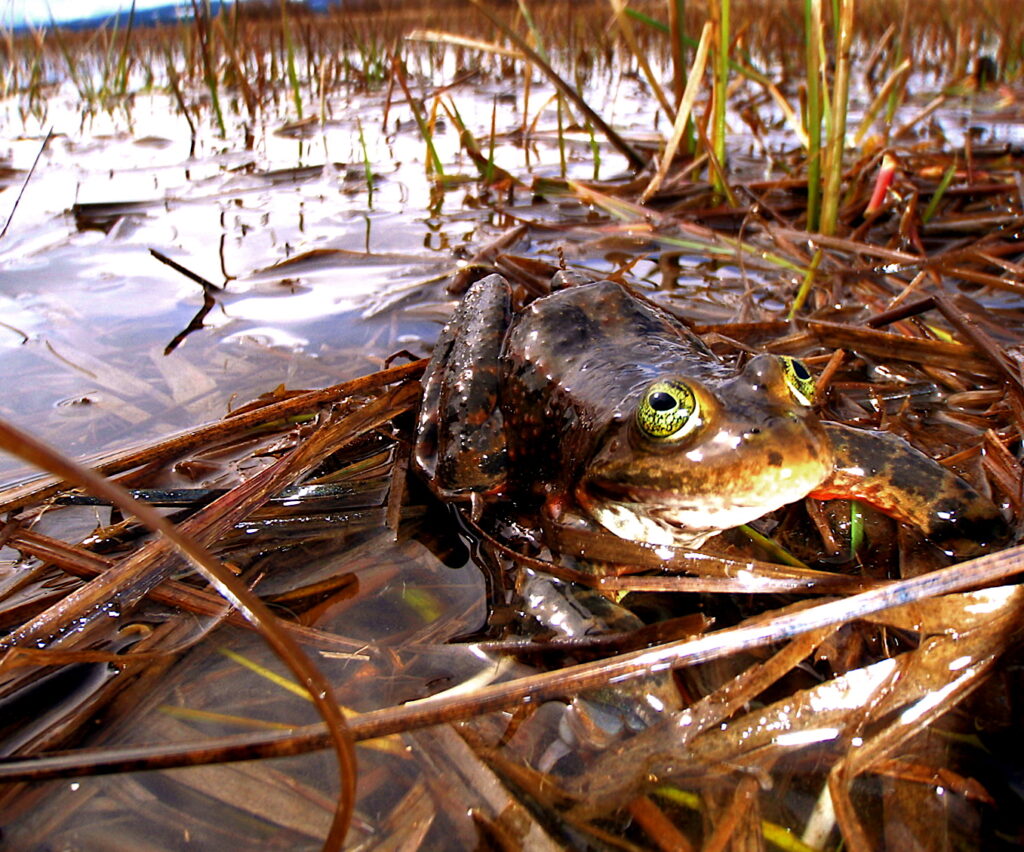Rana pretiosa

Habitat, Diet & Status
Habitat: Shallow, warm wetlands with abundant emergent vegetation, including marshes, ponds, and slow-moving streams
ESA Status: Threatened (listed in 2014)
Diet: Primarily insects and other small invertebrates; tadpoles consume algae and detritus
The Oregon spotted frog is one of the most aquatic native frogs in the Pacific Northwest, rarely straying far from water. Named for the distinctive black spots with light centers on its back and legs, this medium-sized amphibian exhibits a reddish-brown coloration that intensifies with age. Its upturned eyes and fully webbed feet make it an adept swimmer, often seen basking in sunlit wetlands.
The Message and the Wetlands
Historically ranging from British Columbia to northern California, the Oregon spotted frog has experienced a significant decline, now occupying less than 25% of its former range. In Oregon, populations are primarily found on the east slope of the Cascades, with notable strongholds in Deschutes, Klamath, Lane, and Wasco counties. The species has been extirpated from many historical sites, including much of the Willamette Valley.
Key threats to the Oregon spotted frog include:
- Habitat Loss: Wetland drainage for agriculture, urban development, and resource extraction has led to substantial habitat degradation.
- Hydrological Alterations: Changes in water flow and availability, such as dam construction and water diversion, disrupt breeding and overwintering habitats.
- Invasive Species: Non-native predators like the American bullfrog and warm-water game fish prey on eggs, tadpoles, and adult frogs.
- Vegetation Changes: Invasive plant species can alter wetland structure, reducing suitable basking and breeding sites.
Conservation efforts are underway to address these challenges. The U.S. Fish and Wildlife Service has developed a recovery plan focusing on habitat restoration, invasive species control, and population monitoring.
What You Can Do: Support wetland conservation initiatives and organizations working to restore native habitats. Participate in community science projects monitoring amphibian populations. Advocate for policies that protect and restore wetland ecosystems, ensuring the survival of the Oregon spotted frog and the myriad species that depend on these habitats.
